Accepted Scientific Name: Crassula exilis Harv.
Fl. Cap. (Harvey) 2: 347. 1862 [15-31 Oct 1862] Harv.
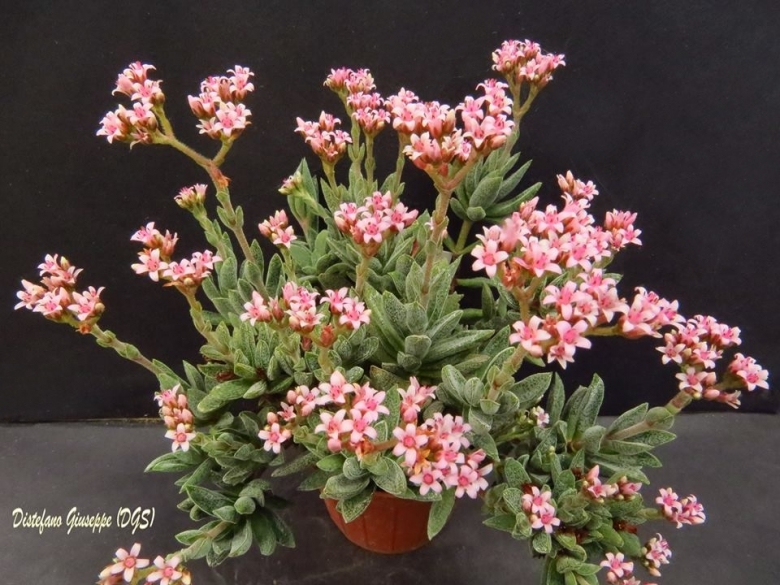
Crassula х justi-corderoyi Photo by: Giuseppe Distefano
Origin and Habitat: Hybrid.
Synonyms:
See all synonyms of Crassula exilis
Common Names include:
RUSSIAN (Русский): Крассула Юсти-Кордерои
Description: Crassula x Justi-Corderoyi (Crassula perfoliataSN|11170]] x Crassula perfoliataSN|11170]]) is a small, cluster-forming hybrid with very interesting leaf colouration and texture that might be called a larger edition of Crassula exilis with more fleshy leaves and brighter pink or red flowers. As might be expected of a hybrid, it is quite variable in size, shape and colouration.
Leaves: Very narrow, triangular, gold to dark green which become quite reddish in the sun measuring approximately 10-12 cm long by 1 cm wide.
Blooming season: Midsummer.
Subspecies, varieties, forms and cultivars of plants belonging to the Crassula exilis group
- Crassula exilis Harv.: (subsp. exilis) The spreading blunt hairs on the peduncle are characteristic of this subspecies. Distribution: west part of the range near the Orange River.
- Crassula exilis subs. cooperi (Regel) Toelken: forms large brancing cushions, with broader, oblanceolate, less fleshy, leaves. Pedencle erect, hairy with a flat-topped inflorescence. Distribution: Graaff-Reinet and Aliwal North.
 Crassula exilis subs. picturata (Boom) G.D.Rowley: (subsp. cooperi) has broader leaves scattered with red spots, rarely fleshy, the flowering erect stem is hairy. Distribution: Graaff-Reinet and Aliwal North.
Crassula exilis subs. picturata (Boom) G.D.Rowley: (subsp. cooperi) has broader leaves scattered with red spots, rarely fleshy, the flowering erect stem is hairy. Distribution: Graaff-Reinet and Aliwal North. Crassula exilis subs. schmidtii (Regel) G.D.Rowley: has small carmine-red flowers, linear-triangular leaves 2–4 cm long and more erect follicles. Distribution: South Africa, may be a horticultural form of Crassula exilis ssp. cooperi.
Crassula exilis subs. schmidtii (Regel) G.D.Rowley: has small carmine-red flowers, linear-triangular leaves 2–4 cm long and more erect follicles. Distribution: South Africa, may be a horticultural form of Crassula exilis ssp. cooperi. - Crassula exilis subs. sedifolia (N.E.Br.) Toelken: This subspecies is distinguished from the other two subspecies by the absence of hairs on the peduncle. It is more robust. Distribution: Northern Cape and southern Namibia (west part of the range near the Orange River).
 Crassula х justi-corderoyi H.Jacobsen & Poelln.: (C. exilis x C. perfoliata) is a hybrid that might be called a larger edition of C. exilis with more fleshy leaves and brighter pink flowers. It is variable in size, shape and colouration.
Crassula х justi-corderoyi H.Jacobsen & Poelln.: (C. exilis x C. perfoliata) is a hybrid that might be called a larger edition of C. exilis with more fleshy leaves and brighter pink flowers. It is variable in size, shape and colouration.
Bibliography: Major references and further lectures
1) James Cullen, Sabina G. Knees, H. Suzanne Cubey "The European Garden Flora Flowering Plants: A Manual for the Identification of Plants Cultivated in Europe, Both Out-of-Doors and Under Glass" Cambridge University Press, 11/ago/2011
2) Hermann Jacobsen ”A Handbook of Succulent Plants: Abromeitiella to Euphorbia” Blandford Press, 1960
3) John Robert Brown “Unusual Plants: 110 Spectacular Photographs of Succulents” Abbey Garden Press, 1954
4) John Robert Brown, Alain Campbell White, Boyd L. Sloane, George W. Reynolds “Succulents for the amateur: introducing the beginner to more than eight hundred fascinating succulent plants” Abbey garden press, 1946
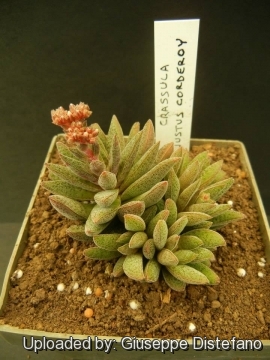 Crassula х justi-corderoyi Photo by: Giuseppe Distefano
Crassula х justi-corderoyi Photo by: Giuseppe Distefano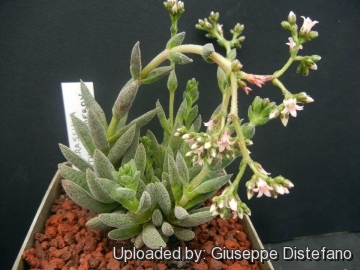 Crassula х justi-corderoyi Photo by: Giuseppe Distefano
Crassula х justi-corderoyi Photo by: Giuseppe Distefano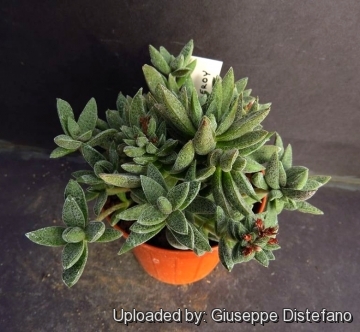 Crassula х justi-corderoyi Photo by: Giuseppe Distefano
Crassula х justi-corderoyi Photo by: Giuseppe Distefano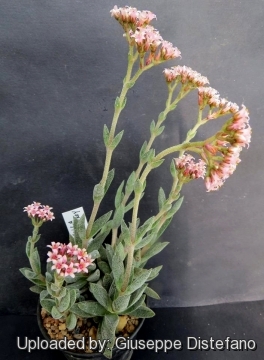 Crassula х justi-corderoyi Photo by: Giuseppe Distefano
Crassula х justi-corderoyi Photo by: Giuseppe Distefano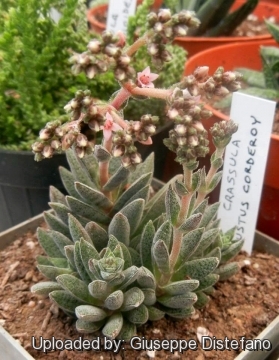 Crassula х justi-corderoyi Photo by: Giuseppe Distefano
Crassula х justi-corderoyi Photo by: Giuseppe DistefanoSend a photo of this plant.The gallery now contains thousands of pictures, however it is possible to do even more. We are, of course, seeking photos of species not yet shown in the gallery but not only that, we are also looking for better pictures than those already present.
Read More... Cultivation and Propagation: Crassula x justi-corderoyi are of easy cultivation and relatively low maintenance, which makes them a good houseplant, and can be an excellent subject for the beginning succulentophile (they can grow easily on window sills, verandas and in miniature succulent gardens where they are happy to share their habitat with other smaller succulent plants, or in outdoor rockeries). They are spring and autumn grower (summer dormant).
Soil: They are tolerant of a wide range of soils and habitats, but prefer a very porous potting mix to increase drainage. A non-acid soil is ideal. You can grow a plant in a 6-10 cm pot for years and have perfectly happy plants. For best results, use a shallow pot.
Watering: Provide some water all year around, in the wild most of the growth occurs during spring and autumn. During the hot summer months, the soil should be kept moist but not overly wet. During the winter months, water only when the soil becomes completely dry. Wet soil quickly causes root and stem rot, especially during chilly winter months, but can re-root if taken care of. No water should ever be allowed to stand around the roots. Low ambient humidity is always needed.
Fertilization: The plants are fertilized only once during the growing season with a balanced fertilizer diluted to ½ the recommended strength.
Sun Exposure: They need full sun or bright, filtered light with ample airflow to stay compact, but avoid direct blasting sun in mid summer (with sun exposure the leaf develops a nice reddish tint), they do not do well in full shade as they tend to etiolate, fall over and rot easily.
Pest & diseases: Crassulas are sensitive to mealybugs.
Rot: Rot is only a minor problem with Crassula if the plants are watered and “aired” correctly. If they are not, fungicides won't help all that much. Care must be given in watering, keeping them warm and wet while growing, and cooler and dry when dormant.
Hardiness: Although the plants will survive mild frost if kept dry (hardy as low as -5° C) they should be protected from frost to prevent scarring. USDA 9b-12
Use: It is an excellent potted plant great for windowsill culture as well as in rock gardens. Indoors only in brightest position.
Pruning: Remove old leaves from plant base and dead flower spikes only.
Propagation: They are easily propagated by the removal of off shoots, remove a lateral shoot and insert the basal part buried in the soil. This shoot should root within a month, and small offshoots will form at the base.















